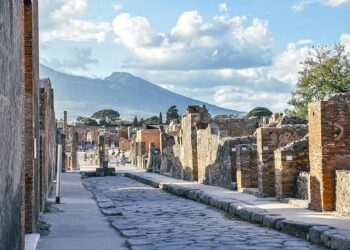Some people from an ancient community in what is now northern Italy were interred with animals and animal parts from species such as dogs, horses and pigs. The reasons remain mysterious, but might indicate an enduring companion relationship between these humans and animals, or religious sacrificial practices, according to a study published February 14, 2023 in the open-access journal PLOS ONE by Zita Laffranchi from the University of Bern, Stefania Zingale from the Institute for Mummy Studies, Eurac Research Bozen, Umberto Tecchiati from the University of Milan, and colleagues.
Of the 161 people buried at Seminario Vescovile, an archaeological site in Verona from 3rd to 1st century BCE, 16 were buried with some kind of animal remains. Some of the graves contained the remains of animals often eaten by people — including many pigs, a chicken and part of a cow — which may have represented food offerings to the dead. But four of the people buried on the site were buried alongside the remains of dogs and/or horses, which are not commonly eaten.
To look for patterns that might explain these animal burials, the researchers analyzed the demographics, diets, genetics and burial conditions of the interred humans and animals, but this did not lead to any notable correlations. In particular, the people interred with animals do not seem to be closely related to each other, which would have suggested that this was a practice of a certain family. The people buried with dogs or horses also varied — they include a baby buried with a complete dog skeleton, a young man buried with parts of a horse, a middle-aged man buried with a small dog and a middle-aged woman buried with an entire horse, multiple other horse parts and a dog skull.
The lack of patterns among these graves mean that multiple interpretations of these human-animal co-burials remain possible, the authors say. For example, animals like dogs and horses often had religious symbolism in ancient cultures — but at the same time, specific individuals may also have been buried with their animal companions. In addition, the authors note, these human-animal burial practices might have been determined by the interplay between different individual traits and societal customs.
The authors add: “This study, which is part of the CELTUDALPS research project (co-financed by the Swiss National Science Foundation and the Province of South Tyrol, and coordinated by Marco Milella of the University of Bern and Albert Zink of the Institute for Mummy Studies, Eurac Research), explores burials of horses and dogs with humans, and may hint at unknown rituals and beliefs during the late centuries BCE in Italy.”
>>> Read full article>>>
Copyright for syndicated content belongs to the linked Source : Science Daily – https://www.sciencedaily.com/releases/2024/02/240214150241.htm






























